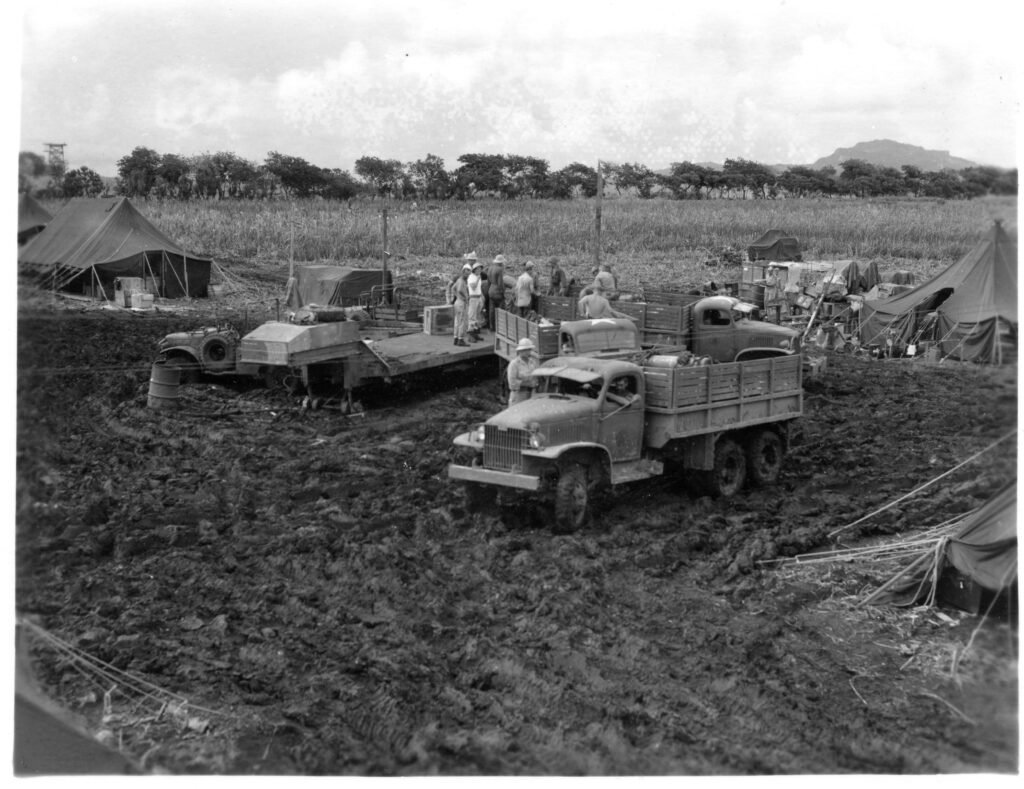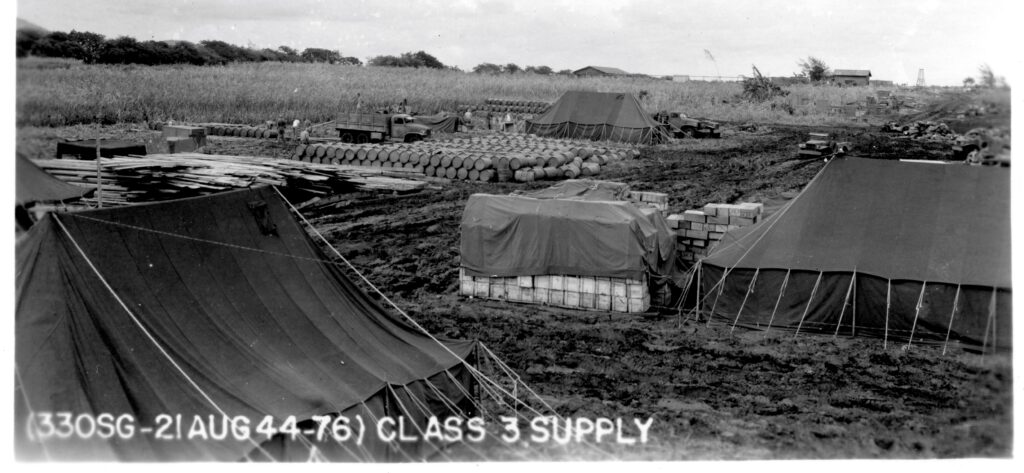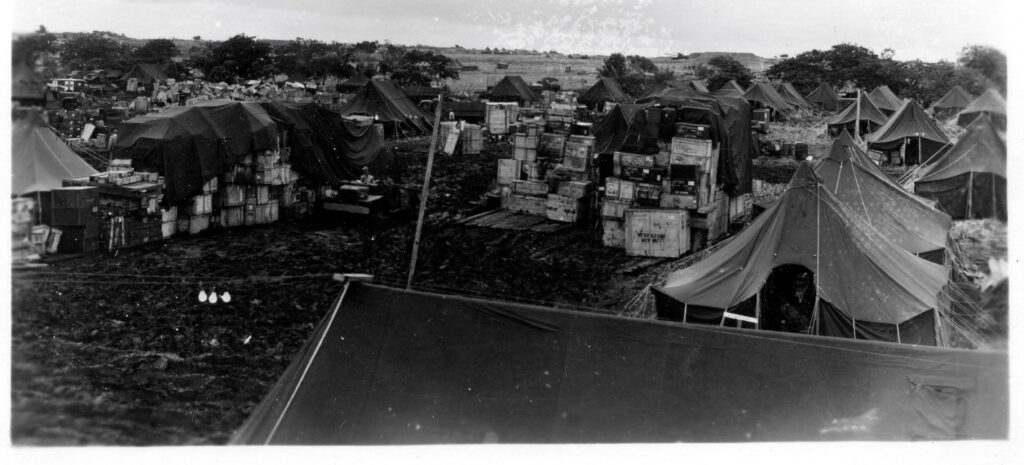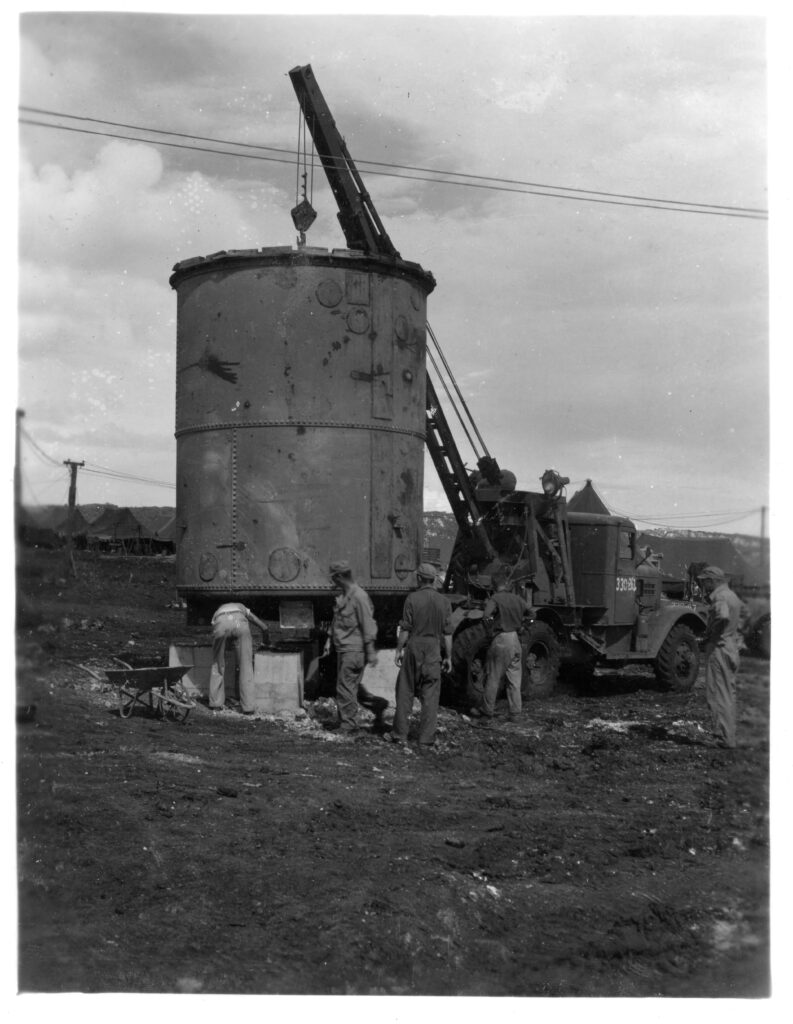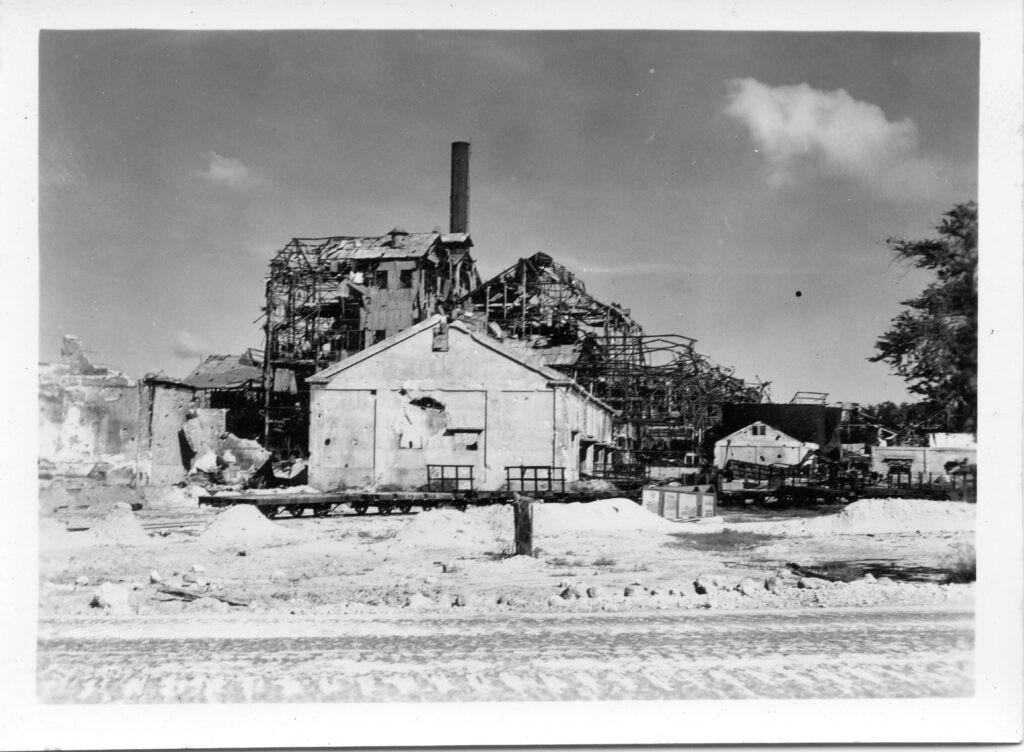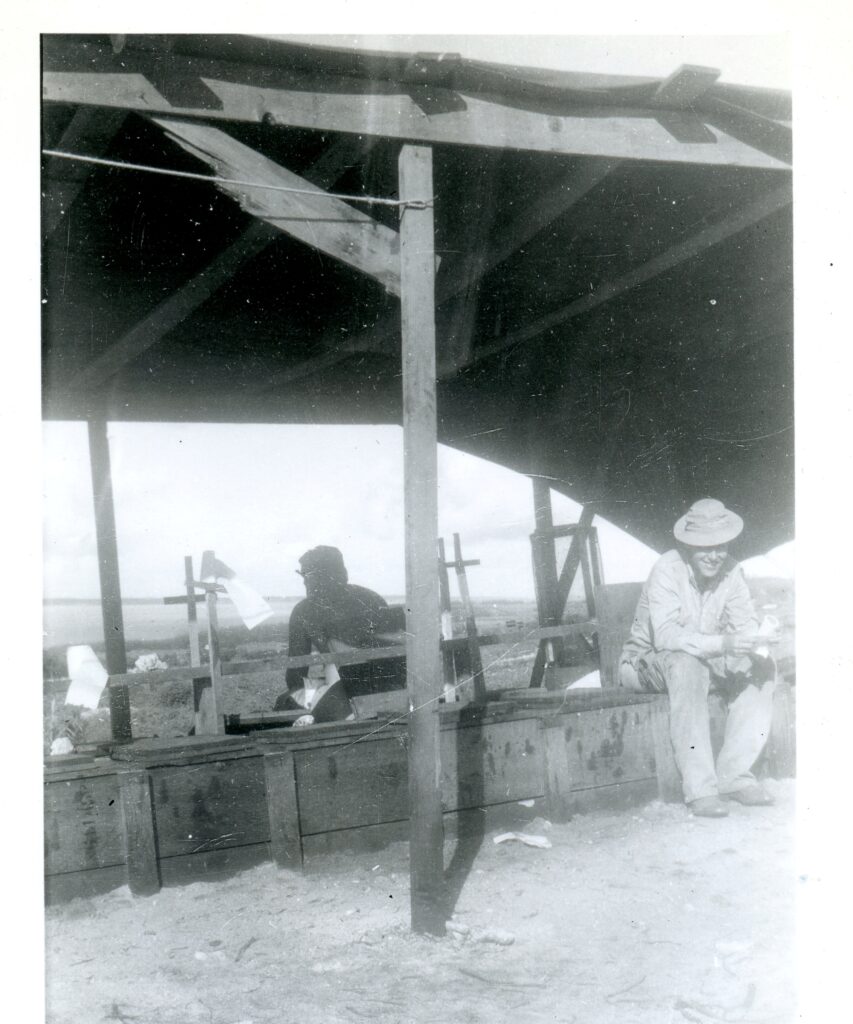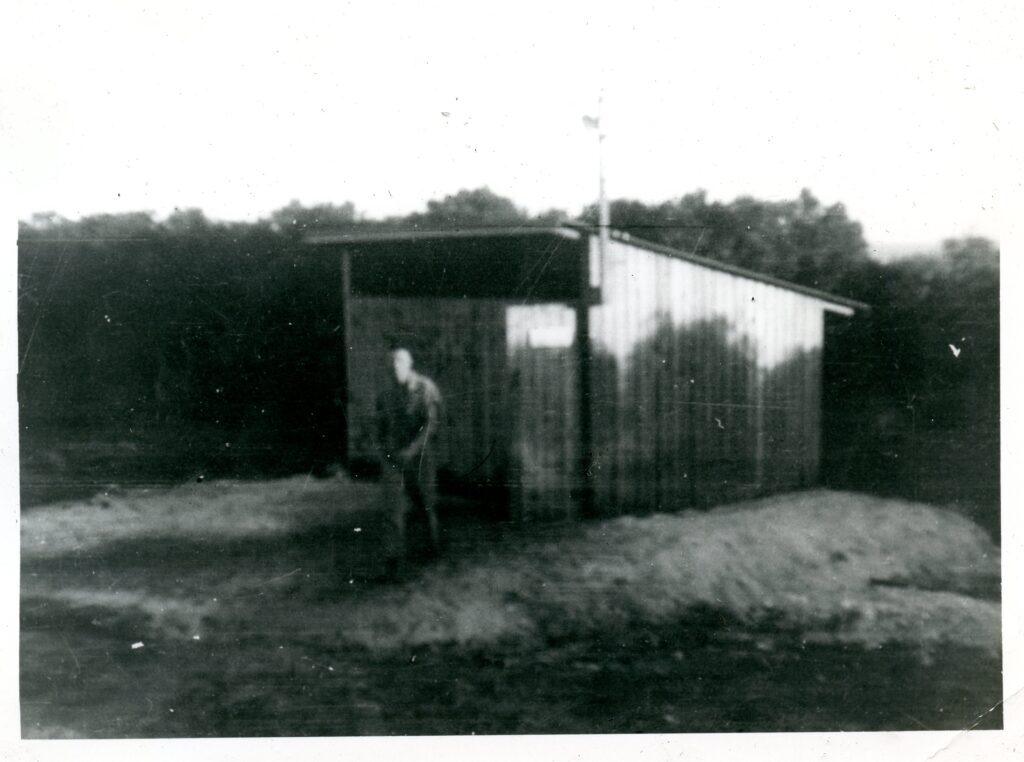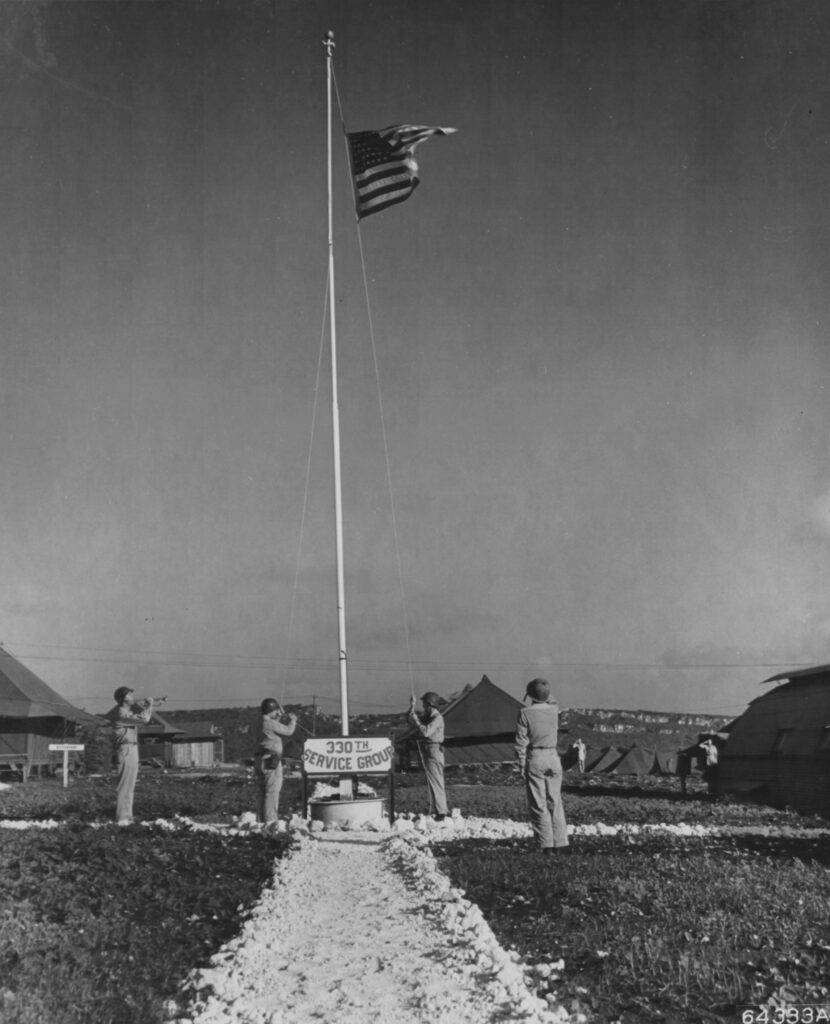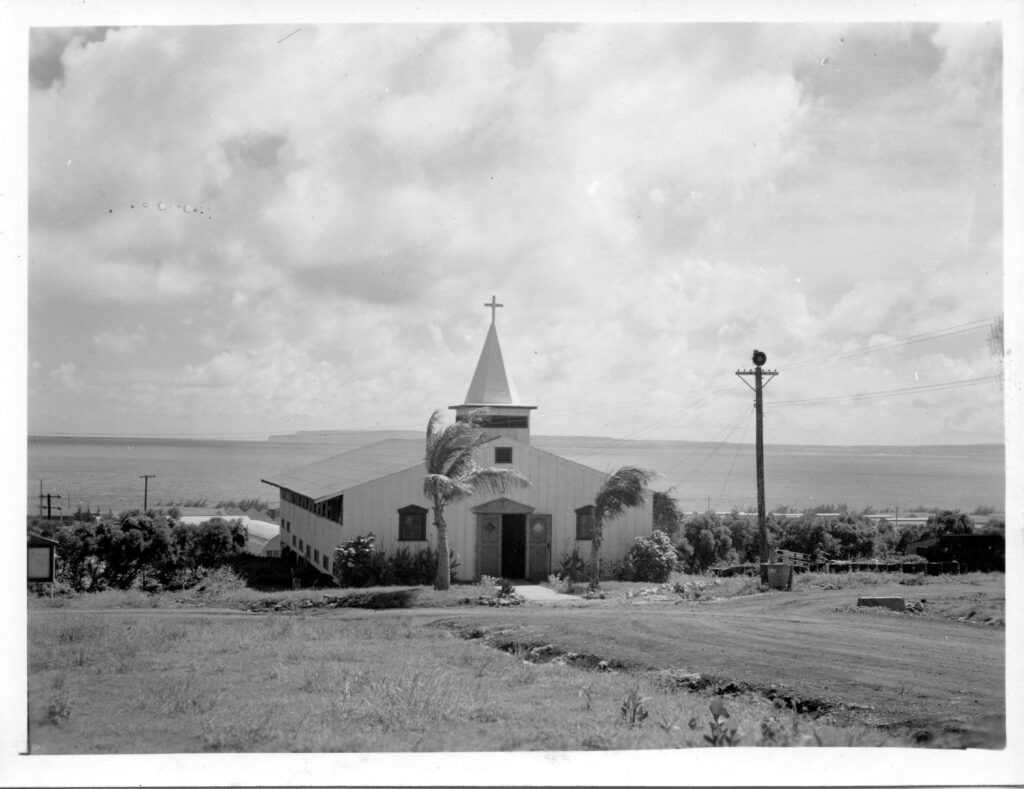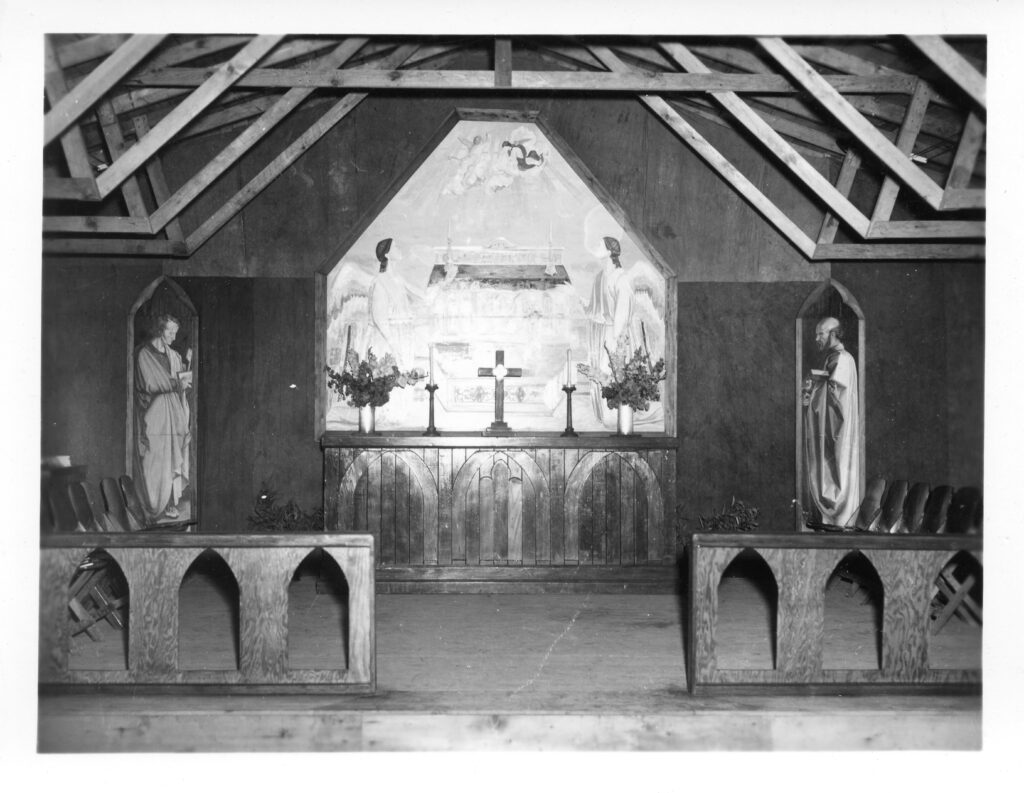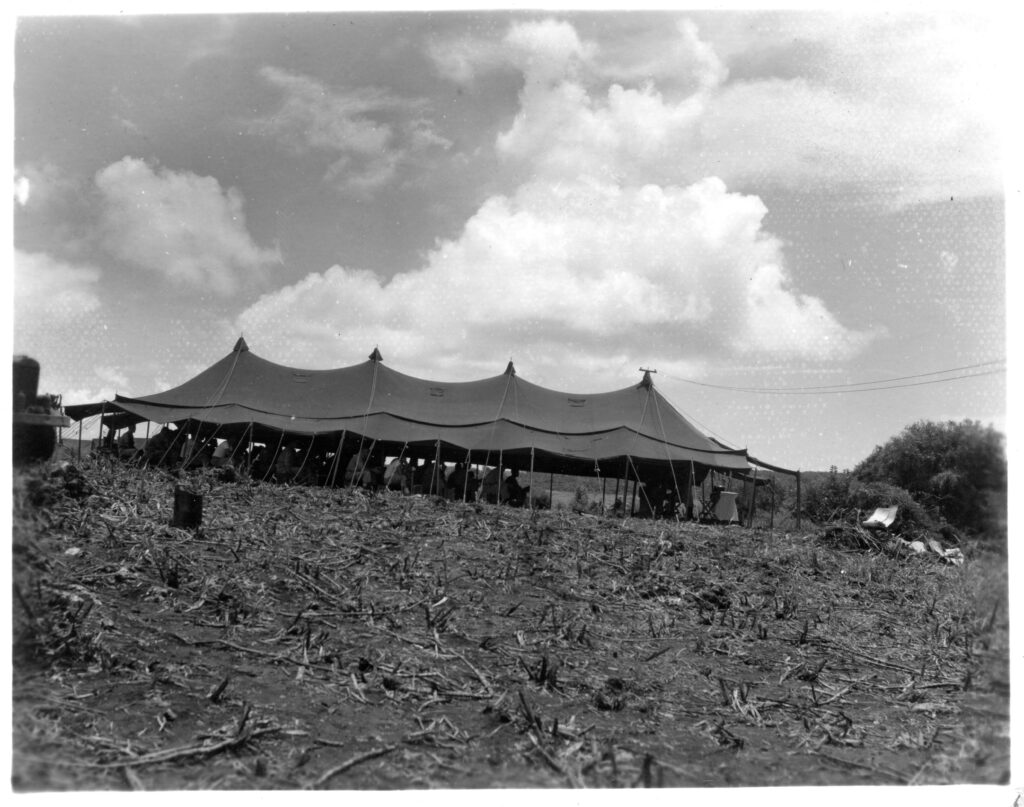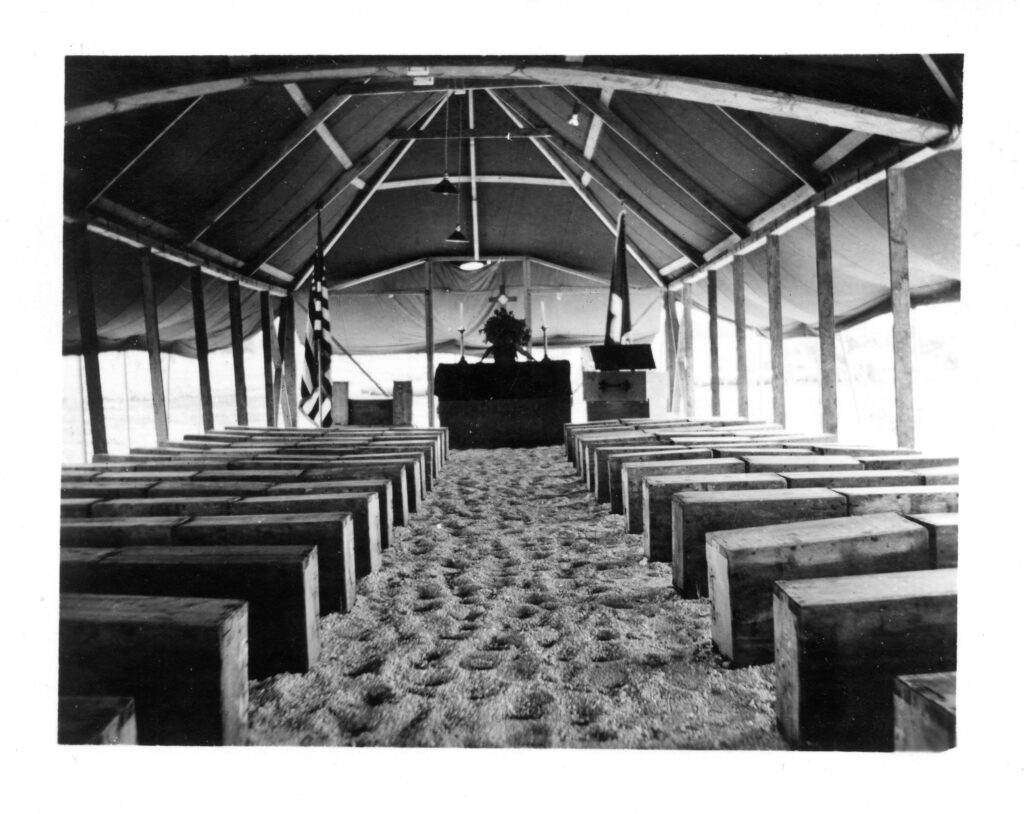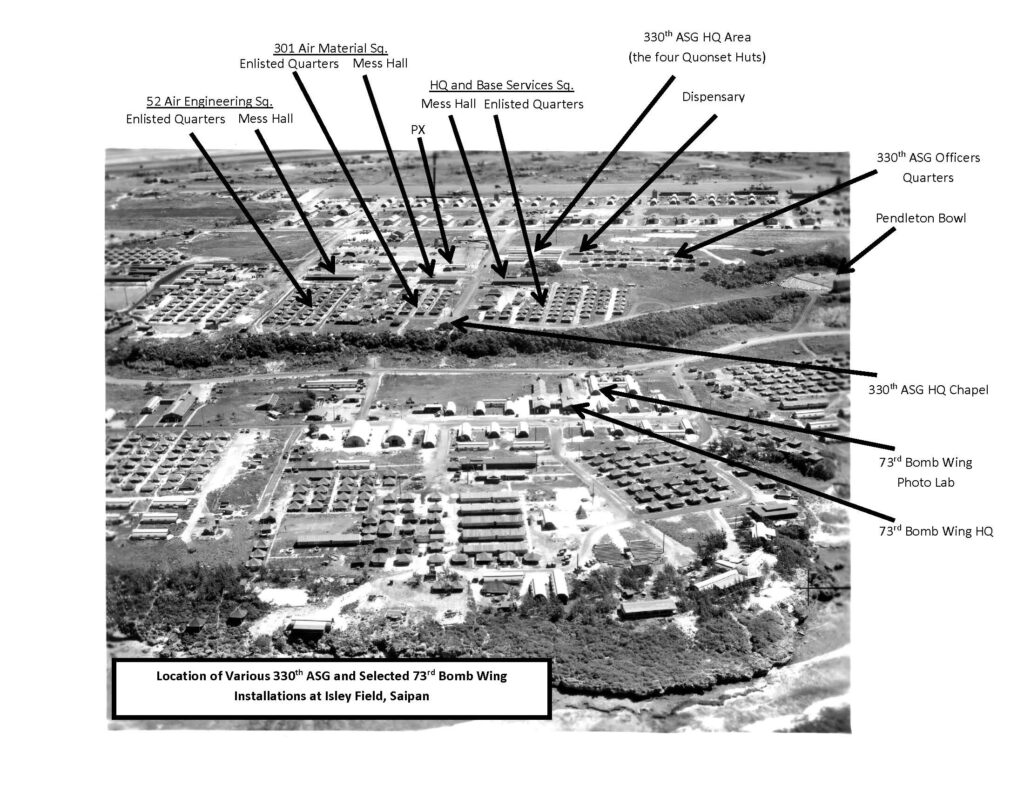
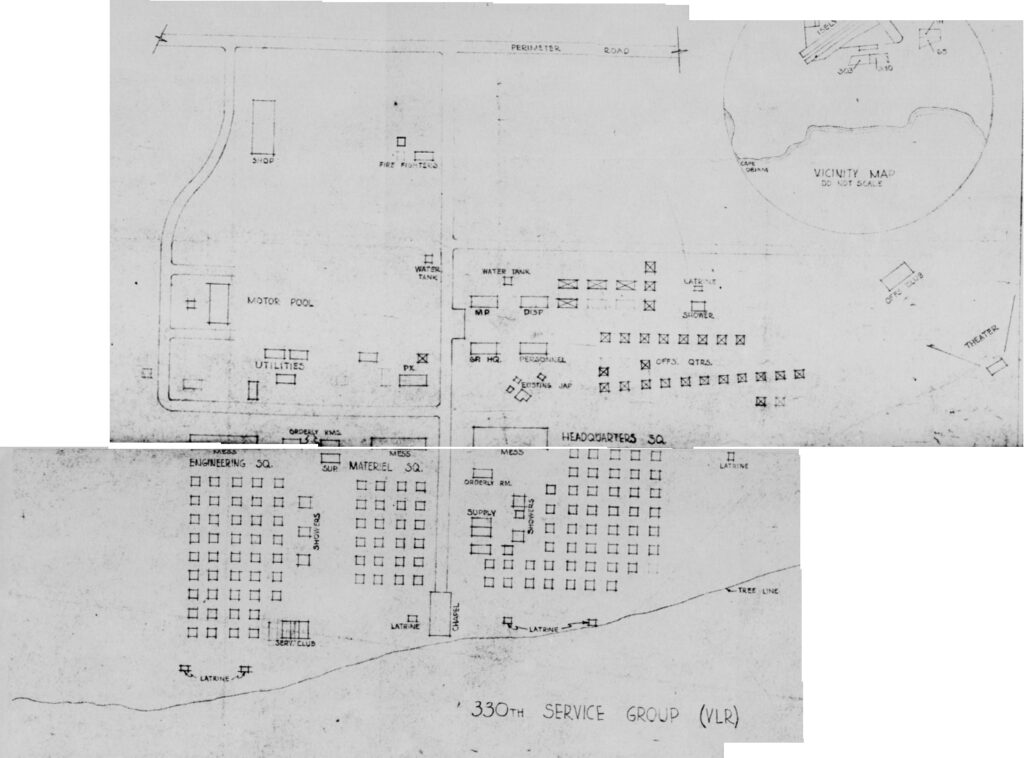
Although the job of a service group is to help run a forward airbase and conduct high-level maintenance and repair of planes, they had to start by building their own facilities when they arrived on Saipan. At first they lived in two-man pup tents, ate C- and K-rations standing up, and were allowed to drink one canteen of chemically-treated swamp water a day (the taste of which was so bad one member of the 330th said it was “indescribable.”) Dead Japanese soldiers (and a few live ones too) were in their area when they arrived.
